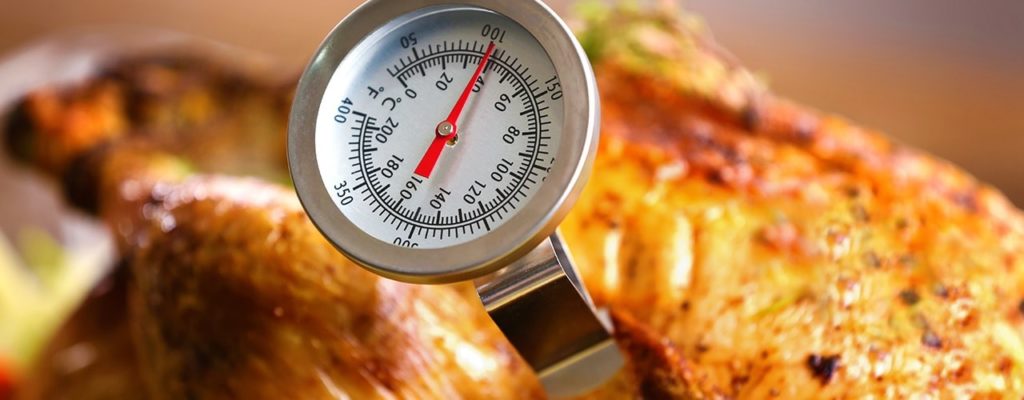Here’s an interesting piece of information we read in the National Restaurant Association newsletter: Homemade pickles are the third most popular condiment.
We’re also hearing about the E Coli outbreak linked to romaine lettuce.
Those two pieces of information, together with the approach of summer, is making us think about food safety.
Even though produce is healthy, it can sometimes contain harmful germs, such as Salmonella, E. coli, and Listeria, and these can make you and your family sick. In the United States, nearly half of foodborne illnesses are caused by germs on fresh produce.
“So let’s go over some basic food safety rules,” says Michael DeSatnik of Dean Supply. “Of course, you already know them, but it never hurts for us to keep being reminded.”
1.Use thermometers. Don’t guess that the food is kept at the proper temperature. A general rule is that cool season crops (those not affected by frost), such as onions, kale, spinach, etc. should be at 32 to 35 degrees. Warm season crops, like cantaloupe, squash or cucumber, should be stored at 45-55 degrees.Pre-cut vegetables should always be refrigerated.
“Salmonella is always unpleasant,” DeSatnik said, “and it’s a lot more common than you’d think to get it from lettuce or spinach. Err towards caution and use a refrigerator thermometer.”
2.Sometimes it might be better for you to keep the produce on ice, as opposed to being inside a refrigerator. If you use ice, be sure to keep it very clean.
3.Scrub your cutting boards and utensils. You may think the cutting boards are clean, but use a heavy-duty bleach. Let it sit for a few minutes and then rinse. Keep a bin filled with water and a cleaning solution at all times and, when you’re done, throw it in to soak.
4.Wash fruit and vegetables thoroughly. Even if you plan to peel it first, you should still wash it. A good natural solution is to fill a bin with water, add one cup of white vinegar and let it soak for an hour. It’s not recommended to clean produce with soap or detergent.
5.Bag produce separately from meat, poultry and seafood to be sure there’s no cross-contamination.
6.When preparing vegetables and fruit, cut away any bruised or damaged areas. If the produce looks rotten to you, discard it because “better safe than sorry,” says DeSatnik.
SAFE MEAT STORAGE AND PREPARATION
- When you are purchasing meat or poultry, check to see that the package feels cold to the touch. If it doesn’t, it could mean that it wasn’t stored at the proper temperature. If there’s any liquid in the package that could also be a sign of an improper storage temperature, or even excessive storage. The packages should also be tightly wrapped with no puncture marks. If you see any of this, ask about it, but if you have even the slightest doubt, don’t buy it.
- Place the meat/ poultry packages on a tray or inside a plastic storage container in the refrigerator to ensure that juices do not leak onto other food items.
- If it’s possible, use separate cutting boards for meat and vegetables to avoid cross-contamination.
“The most important thing is to keep your restaurant patrons happy and healthy, so they’ll keep coming back for a long time,” says DeSatnik.




